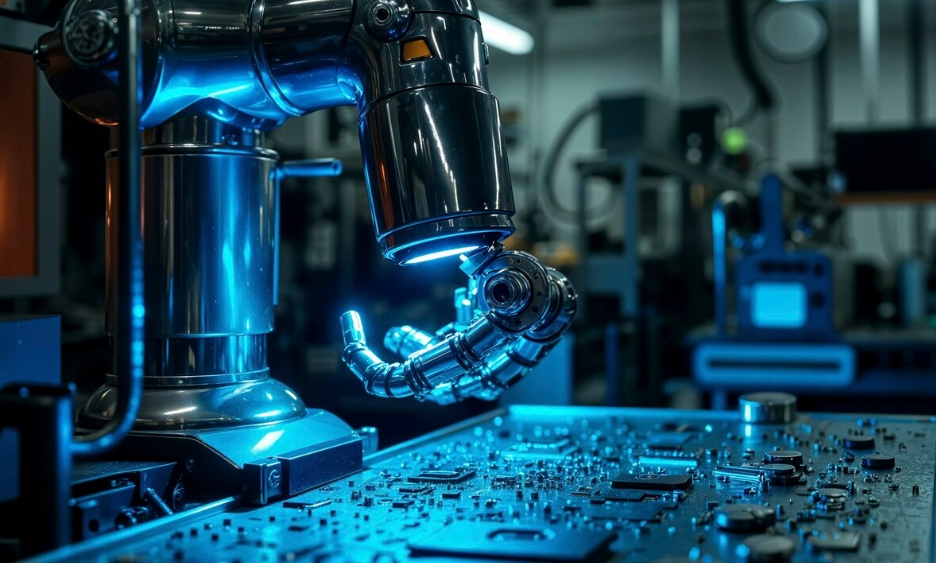Introduction
Space exploration has long captured the imagination of humanity, pushing the boundaries of technology and knowledge. As we venture farther into the cosmos, one of the most promising areas of innovation lies in robotics. Robotic systems are already playing an essential role in current space missions, and they hold the key to enhancing the capabilities of astronauts in future space exploration. From performing delicate tasks to ensuring astronauts’ safety in hostile environments, robotics is transforming how we explore space and assist human crews in orbit and beyond.
This article explores how robotics is shaping the future of space exploration, enhancing astronaut assistance, and enabling new possibilities in the search for life, resources, and knowledge in space.
The Role of Robotics in Space Exploration
1. Robotic Assistance in Space Stations
The International Space Station (ISS) has long served as a hub for scientific research in low Earth orbit (LEO). Astronauts aboard the ISS have a demanding job, balancing experiments, maintenance, and the daily upkeep of the space station. Robotic systems such as the Canadarm2 and Dextre are critical in providing astronaut assistance for tasks that are either too dangerous or cumbersome for human crews.
- Canadarm2 is a robotic arm that can manipulate large equipment, assist with docking spacecraft, and even perform repairs on the ISS.
- Dextre, a two-armed robotic system, assists astronauts by performing tasks like replacing equipment, conducting maintenance, and performing small repairs, reducing the need for spacewalks.
These robotic assistants are essential for keeping the ISS running smoothly, allowing astronauts to focus on scientific research and reducing the risks associated with extravehicular activities (EVAs).
2. Robotics for Spacewalks (EVAs)
Spacewalks are an integral part of space exploration, allowing astronauts to perform critical maintenance tasks outside spacecraft. However, spacewalks are both physically demanding and risky due to the harsh conditions of outer space. Robotic systems are being developed to assist astronauts during EVAs, ensuring that they are safer and more efficient.
For instance, the Robonaut 2 (R2) was designed as a humanoid robot capable of assisting astronauts during spacewalks. With dexterous hands and a humanoid structure, R2 can perform tasks like tool handling, equipment maintenance, and even help astronauts prepare for future missions by providing real-time support.
In the future, robots could take on more of the heavy lifting during spacewalks, allowing astronauts to focus on more complex tasks while robots handle the manual labor. Additionally, autonomous robots could be deployed to perform repairs and maintenance without requiring an astronaut to venture outside the spacecraft.
3. Autonomous Rovers and Exploration of Other Planets
While astronauts have yet to land on Mars, robotic systems have been exploring the surface of other planets and moons for years. Autonomous rovers, such as NASA’s Perseverance Rover and the Curiosity Rover, are designed to perform a variety of scientific tasks, including analyzing soil samples, searching for signs of past life, and capturing high-resolution images of planetary surfaces.
The future of robotic space exploration includes even more advanced rovers capable of operating independently for extended periods. These rovers will play a critical role in exploring distant planets and moons, searching for signs of life, collecting data, and preparing the groundwork for human missions. They will be essential in identifying suitable landing sites, gathering resources, and providing astronauts with critical information before they arrive.
4. Space Mining and Resource Utilization
One of the most promising applications of robotics in space exploration is resource utilization, specifically through space mining. As space missions continue to progress, there will be a need for more resources to sustain human colonies on the Moon, Mars, and beyond. Robotic systems will play a crucial role in extracting valuable materials like water, metals, and rare minerals from asteroids and moons.
Autonomous robotic mining systems could prospect and mine resources in space, minimizing human risk while maximizing efficiency. These robots would be able to operate in harsh, uninhabitable environments, collecting materials necessary for future space habitats, fuel production, and even manufacturing goods in space.
5. AI-Powered Robotics for Decision Making
The role of artificial intelligence (AI) in space exploration is growing in tandem with advancements in robotics. AI-powered robots can process large amounts of data, make decisions autonomously, and adapt to dynamic situations in real-time. This is particularly important for missions that are far from Earth, where communication delays can make it difficult to rely on human control.
AI robots are already assisting astronauts with data analysis, performing diagnostics, and even managing tasks such as controlling spacecraft systems. In the future, AI could help robots autonomously conduct scientific experiments, monitor astronaut health, and even respond to emergencies without requiring direct human intervention.
6. Human-Robot Collaboration
The future of astronaut assistance will likely involve a symbiotic relationship between humans and robots. Instead of robots working in isolation, astronauts will work alongside robots to perform complex tasks, benefiting from the strengths of both. Human creativity, adaptability, and problem-solving will complement the precision, endurance, and strength of robotic systems.
In future lunar and Martian missions, robots could be employed to build habitats, extract resources, and conduct environmental assessments, while astronauts focus on more complex scientific exploration. This collaboration will make space exploration more efficient, reducing the risk to human lives while accelerating the pace of discovery.
Challenges and Opportunities
1. Technical Limitations
While robotics in space is advancing rapidly, there are still significant technical challenges to overcome. Space is a harsh environment, and robotic systems must be able to withstand extreme temperatures, radiation, and the vacuum of space. Additionally, robots need to be highly reliable, as human intervention is often impossible during long-duration missions.
One of the biggest challenges is the need for more autonomous robots. Communication delays between Earth and distant spacecraft mean that robots must be able to operate independently, making real-time decision-making crucial.
2. Ethical Considerations
As robots become more integrated into space exploration, ethical considerations must be addressed. For example, who is responsible if a robot makes a mistake during a mission? How should robots be programmed to make decisions in critical situations? These are complex issues that require careful thought and planning as we continue to develop autonomous space systems.
3. Funding and Collaboration
Robotics in space exploration requires significant investment in research, development, and testing. International collaboration between space agencies such as NASA, ESA, and private companies like SpaceX and Blue Origin is key to making these advancements a reality. Governments and private sector players must work together to fund and support robotics research to ensure the future success of space exploration.
Conclusion
Robotics is an essential part of the future of space exploration, providing astronauts with the tools they need to operate safely and efficiently in space. From assisting with spacewalks to conducting autonomous planetary exploration, robots will be integral to the success of future missions. As technology continues to advance, robots will not only assist astronauts but also become critical partners in humanity’s quest to explore and colonize other planets. The future of astronaut assistance lies in the collaboration between humans and robots, creating a new era of space exploration that is both more efficient and safer for all involved.


